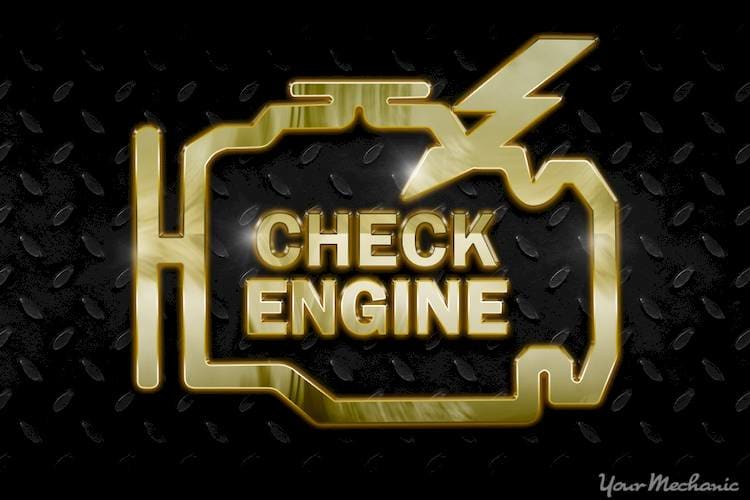P0110 Trouble code definition
Intake Air Temperature Sensor Circuit Malfunction
What the P0110 code means
P0110 is a general code for a problem with the Intake Air Temperature (IAT) electrical circuit sensor sending incorrect voltage input signals to the Engine Control Unit (ECU). This means the voltage input to the ECU is incorrect, which then means that it is not in the correct range and causes the ECU to incorrectly manage the fuel system.
What causes the P0110 code?
The source of the problem is the sensor sending improper voltage information to the ECU.
The most common problem is a bad IAT sensor.
The wiring or connector may be bad and have a bad connection, or the wiring could be too close to higher voltage consumption components, especially alternators or ignition wires causing voltage fluctuations. A poor electrical ground can cause problems also.
The sensor itself may be simply operating out of range from normal age and fatigue or damaged parts of the sensor components internally.
IAT sensors must operate within specific ranges to send correct signals for the ECU to coordinate with the throttle position sensor, Manifold Air Pressure sensor, and Mass Air Flow sensor to adjust correctly for proper engine operation.
If the engine is not in good condition, is missing, has poor fuel pressure, or has an internal issue with the engine like a burned valve, it can prevent the IAT sensor from getting a correct output. The ECU could also be bad but that is rare.
What are the symptoms of the P0110 code?
P0110 code will be often preceded by the Check Engine Light coming on the vehicle dashboard display. The vehicle will most often not run well, idle poorly, accelerate erratically, run rich and backfire because the IAT sensor and throttle position sensor are not electrically synchronized together.
How does a mechanic diagnose the P0110 code?
P0110 is diagnosed with an OBD-II scanner. A qualified technician should reset the OBD-II fault codes and then road test the vehicle to see if the code or Check Engine Light come back on. He can observe this by watching data on a scanner with live readings and verifying there is 5 volts input to the IAT sensor. If the IAT Sensor input voltages to the ECU are not correct, then it is most likely the IAT sensor is bad and needs replacement. The technician must check the wiring and connector to make sure it is not simply a loose or weak connector causing the bad temperature readings.
Common mistakes when diagnosing the P0110 code.
Diagnostic errors are mostly due to not following the diagnosis procedure. First, follow the test procedure in the diagnosis to ensure there is the correct voltage to the sensor and from the sensor to the ECU. The technician must verify the voltage output of the IAT Sensor is in the correct range and that the ground wire is connected and grounded.
Do not buy a new IAT Sensor or ECU unless it is clearly at fault.
How serious is the P0110 code?
The P0110 code can result in poor running of the engine and requires immediate attention. It is very important to check it out as soon as possible. The IAT sensor issue can cause excessive fuel consumption, rough operation, poor power, and difficulty starting in certain circumstances. Plus it can cause other damage if continued to be driven. Occasionally, if no problems are found, the technician can reset the fault codes and then retest the vehicle.
Often times, if the Check Engine Light came on immediately at start up, then the OBD-II system can be reset and the vehicle will operate normally.
What repairs can fix the P0110 code?
Verify the code with a good OBD-II scanner. Reset the fault codes and perform a road test to see if the code comes back.
If the code comes back, check the IAT sensor voltage, which is normally 5 volts in along with the electrical connector and wiring. Disconnect the electrical connector and then reinstall to ensure a fresh clean electrical connection. Then check the voltage on IAT output on the sensor to see if it is correct which should gradually increase from .5 volts up to 5 volts as the engine and intake air temperature increases.
At this point, if the readings and wiring are normal, it is best to determine if the IAT sensor is defective and if it has no or incorrect output, before replacing the MAP sensor. If all checks are good, then a final test to determine if the ECU is bad must be done.
Many vehicles with mileage over 100,000 have momentary sensor problems that usually occur during start up or prolonged stress situations on the drive train. If the Check Engine Light comes on and the vehicle seems to be operating normally, the OBD-II system can be reset using the scanner and the problem may not reoccur. This is why it is important to verify the fault and reset it before doing any repairs.
Need help with a P0110 code?
YourMechanic offers certified mobile mechanics who will come to your home or office to diagnose and repair your vehicle. Get a quote and book an appointment online or speak to a service advisor at 1-800-701-6230.
Check Engine Light
P0110
trouble codes





